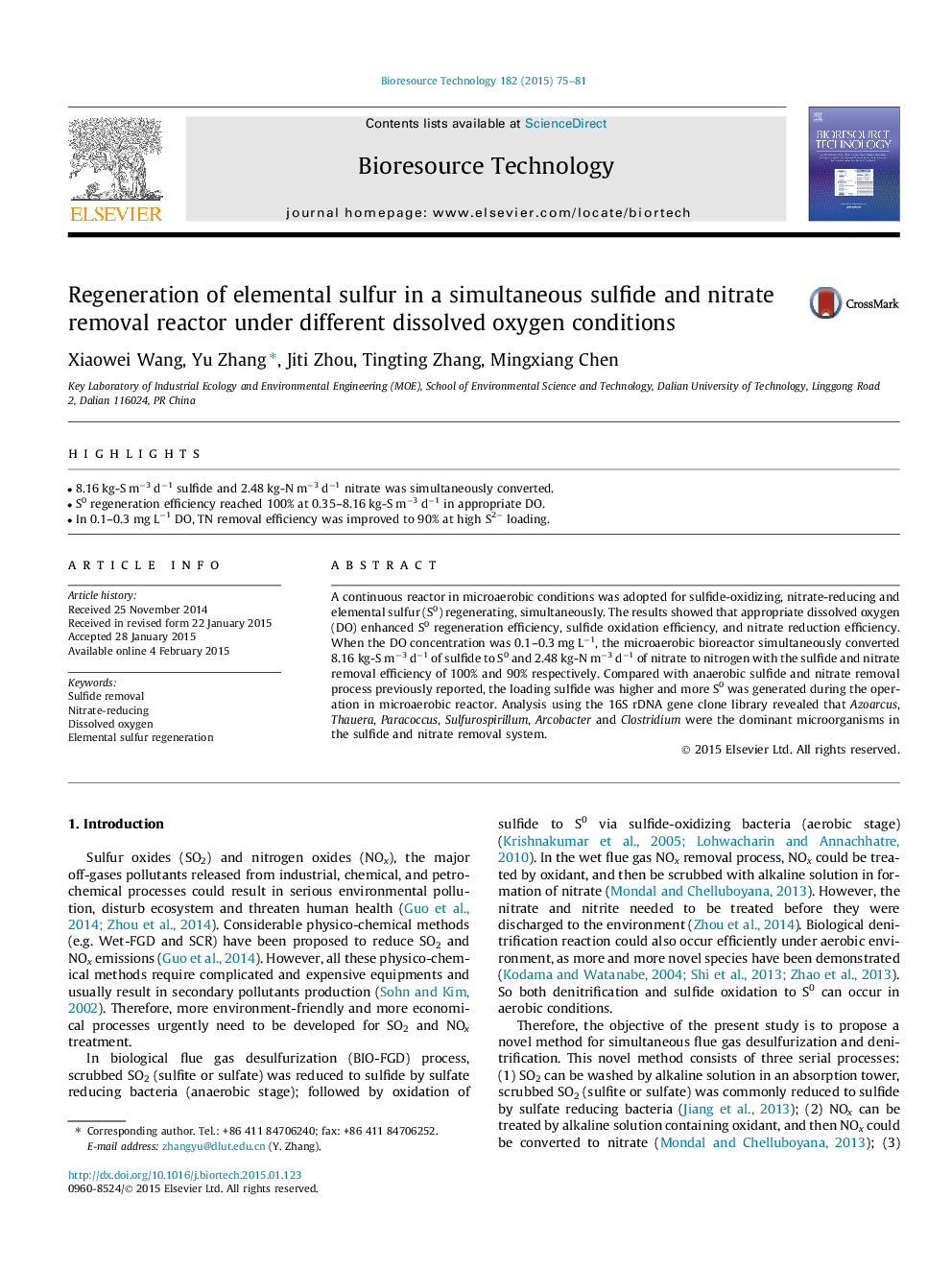| Article ID | Journal | Published Year | Pages | File Type |
|---|---|---|---|---|
| 679962 | Bioresource Technology | 2015 | 7 Pages |
•8.16 kg-S m−3 d−1 sulfide and 2.48 kg-N m−3 d−1 nitrate was simultaneously converted.•S0 regeneration efficiency reached 100% at 0.35–8.16 kg-S m−3 d−1 in appropriate DO.•In 0.1–0.3 mg L−1 DO, TN removal efficiency was improved to 90% at high S2− loading.
A continuous reactor in microaerobic conditions was adopted for sulfide-oxidizing, nitrate-reducing and elemental sulfur (S0) regenerating, simultaneously. The results showed that appropriate dissolved oxygen (DO) enhanced S0 regeneration efficiency, sulfide oxidation efficiency, and nitrate reduction efficiency. When the DO concentration was 0.1–0.3 mg L−1, the microaerobic bioreactor simultaneously converted 8.16 kg-S m−3 d−1 of sulfide to S0 and 2.48 kg-N m−3 d−1 of nitrate to nitrogen with the sulfide and nitrate removal efficiency of 100% and 90% respectively. Compared with anaerobic sulfide and nitrate removal process previously reported, the loading sulfide was higher and more S0 was generated during the operation in microaerobic reactor. Analysis using the 16S rDNA gene clone library revealed that Azoarcus, Thauera, Paracoccus, Sulfurospirillum, Arcobacter and Clostridium were the dominant microorganisms in the sulfide and nitrate removal system.
